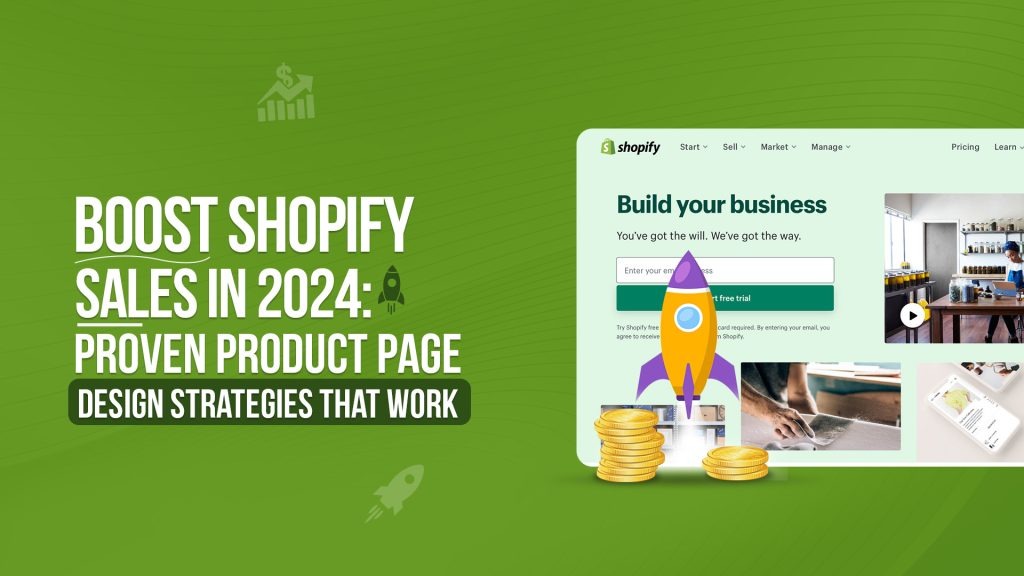In today’s competitive digital landscape, having a Shopify website isn’t just a luxury—it’s a necessity. The real magic lies in creating a Shopify website that converts visitors into paying customers. This guide delves deep into strategies, tips, and actionable steps to maximize your Shopify store’s conversion potential and drive sales.
Why Conversion Optimization Matters for Your Shopify Store
Conversion optimization is the process of turning casual browsers into loyal customers. A highly optimized Shopify website ensures that every visitor has an engaging and seamless shopping experience, ultimately encouraging them to make a purchase. Here are the key benefits of focusing on conversions:
- Increased Revenue: Higher conversion rates mean more sales without the need for additional traffic.
- Improved Customer Retention: An optimized shopping experience fosters trust and loyalty.
- Enhanced ROI: Conversion-focused strategies ensure you get the most out of your marketing efforts.
Key Features of a High-Converting Shopify Website
1. User-Friendly Navigation
Your website’s navigation plays a crucial role in guiding visitors toward their desired products. Ensure that:
- The menu structure is intuitive.
- Categories and subcategories are logically organized.
- A search bar with autocomplete functionality is prominently displayed.
2. Mobile Optimization
With over 50% of online shopping done on mobile devices, a mobile-responsive design is non-negotiable. Test your Shopify store across various screen sizes and ensure:
- Quick load times on mobile.
- Easy-to-click buttons and links.
- A seamless checkout experience tailored for mobile users.
3. High-Quality Product Pages
Your product pages should provide all the information a buyer needs to make a decision. Key elements include:
- Clear Product Images: Use high-resolution photos with zoom capabilities and multiple angles.
- Detailed Descriptions: Include key features, dimensions, materials, and benefits.
- Social Proof: Display customer reviews, testimonials, and ratings prominently.
Strategies to Boost Shopify Store Conversions
1. Optimize Your Homepage for Impact
Your homepage is often the first point of contact with potential customers. Optimize it with:
- A compelling hero image or video.
- Clear value propositions that highlight your unique selling points (USPs).
- Featured products and limited-time offers.
2. Implement Seamless Checkout Processes
Cart abandonment is a major issue for online stores. Reduce it by:
- Offering multiple payment options, including digital wallets.
- Simplifying the checkout process to require as few steps as possible.
- Including a progress indicator to show how many steps remain.
3. Leverage Personalization
Modern shoppers expect tailored experiences. Use tools and apps to:
- Recommend products based on browsing history.
- Send personalized email offers to segmented customer groups.
- Utilize dynamic content for location-specific promotions.
4. Use Scarcity and Urgency Tactics
Create a sense of urgency by showcasing:
- Low stock notifications.
- Countdown timers for flash sales.
- Time-sensitive discounts.
Content Marketing: Driving Traffic and Conversions
1. Blogging for Shopify Success
Start a blog on your Shopify website to drive organic traffic. Focus on:
- Writing SEO-optimized articles targeting long-tail keywords.
- Answering customer pain points and questions.
- Linking to relevant product pages within your posts.
2. Leverage Video Content
Videos increase engagement and conversions. Create:
- Product demonstration videos.
- Tutorials and how-to guides.
- Customer testimonial videos.
3. Create Irresistible Lead Magnets
Provide customers with useful materials in return for their emails, like:
- Discount codes.
- Exclusive guides or eBooks.
- Early access to sales.
Harnessing the Power of Shopify Apps
1. Conversion-Boosting Apps
Shopify’s app store offers numerous tools to enhance your website’s functionality. Popular options include:
- Upsell and Cross-Sell Apps: Increase average order value by suggesting complementary products.
- Exit-Intent Popups: Capture emails from visitors about to leave your site.
- Customer Loyalty Programs: Reward repeat purchases and encourage referrals.
2. Analytics and Heatmaps
Understand visitor behavior using tools like:
- Google Analytics for traffic insights.
- Heatmaps to track clicks, scrolls, and attention areas.
Building Trust to Encourage Purchases
1. Display Trust Badges
Showcase security certifications and payment provider logos to reassure customers.
2. Offer a Generous Return Policy
A clear, hassle-free return policy builds confidence in your brand.
3. Provide Exceptional Customer Support
Add live chat functionality and ensure customer inquiries are answered promptly.
Test, Analyze, and Repeat
Optimizing your Shopify store for conversions is an ongoing process. Regularly:
- Conduct A/B tests on headlines, images, and calls to action (CTAs).
- Analyze metrics like bounce rates, time on site, and conversion rates.
- Implement changes based on customer feedback and data insights.
Success in e-commerce requires a combination of user-centric design, data-driven decisions, and consistent optimization.





